Shinji is on the ground floor of the Crown Towers Hotel within the City of Dreams casino complex, and opened in February 2015. Toru Osumi is the chef de cuisine. He trained for a decade at Kyubey in Tokyo, and with well-known sushi chef Shinji Kanesaka (whose restaurant in Tokyo has a Michelin star) and Singapore, before opening here. The fish used is imported directly from Tsukiji market in Japan up to five times a week. Incidentally, there is common myth that sushi must be as fresh as possible, whereas in fact virtually all sushi is frozen, at least briefly, in order to kill parasites; indeed in the USA it is actually illegal to serve fresh sushi .The only exception allowed is tuna, which is almost always frozen at sea when caught anyway.
The sushi counter is made from Japanese cypress wood. This is opposite a display cabinet of wine and sake, and there are four private dining rooms in addition. A display of wasabi roots is visible at the counter, an indication that the chef takes sourcing seriously: no green-coloured horseradish paste from a tube here. The chef started his preparation by grinding a wasabi root just before service began. The rice is imported from Japan, along with everything else here. There was an omakase menu at HKD 1,688 (£164), as well as two other menus at HKD 688 (£67) and HKD 988 (£96). I went for the lengthier of the two menus in order to get the most sushi (the omakase added some hot dishes and sashimi rather than extra sushi).
The wine list is shared with the other restaurants within the City of Dreams, and has around 750 different labels, ranging widely in price. A selection of sake was also available. The cheapest wine was Pacherenc du Vic Bilh Sec Château Bouscassé "Les Jardins" Alain Brumont 2009 at MOP 280 (£27 compared to a retail price of around £16) whilst at the other end of the scale was right up to the (extremely) limited edition Penfolds Ampule 2004 at MOP 2.5 million (£241,000), about double its notional market price in the UK. In reality this wine is a bit tricky to find as only twelve bottles were ever made. More conventional bottles included Donhoff Riesling Kreuznacher Krotenpful 2012
at MOP 580 (£56) compared to a retail price of about £15, Daniel Etienne-Defaix “Les Lys” Chablis 2003 at MOP 980 (£95) for a bottle with a shop price of around £30, and Vega Sicilia Alion 2012 at MOP 1,250 (£121) for a wine that will set you back £52 in a shop. Extensive vertical selections of prestige wine were offered, with Mouton Rothschild going back to the legendary 1945 vintage. There were some pricing oddities buried away in the list. The lovely Antinori Tignanello 2001 was a hefty MOP 3,800 (£367) compared to a UK retail price of £106, yet the 1997 vintage of the same wine was just a fraction more at MOP 3,980 (£385) whereas this vintage costs £149 in a shop: as can be seen, there was quite a difference in relative mark-up between these wines. Consequently, as so often with restaurant wine lists, some careful research of the list in advance will pay dividends.
The meal began with a bonito soup jelly with sea urchin, which was unusual but enjoyable, the briny taste of the sea urchin contrasting with the jelly. There was no sashimi stage in this menu, so the sequence of sushi started immediately. The chef shaped the warm rice in his hands expertly, applying the necessary soy and wasabi to each piece of sushi. The only condiment was some pickled ginger, made from scratch by the chef.
The sushi began with flounder, followed by sea bream. Smoked yellowtail was excellent, the smokiness carefully controlled and working well. Golden eye snapper followed, then kiss fish. The first sight of tuna was the medium fatty chu-toro, followed by the prized otoro. Next was excellent horse mackerel with its natural hint of spiciness, with a tiny garnish of spring onion. Radish pickles with yuzu zest were an unusual intermission before the sushi resumed with sweet shrimp that had been marinated with seaweed. Geoduck (a saltwater clam) followed, this specimen avoiding the excessive chewiness that clams so often have; then came akami (lean tuna). Uni from Hokkaido followed, then a glass shrimp. The final two pieces of sushi were tuna cheek, and then anago (sea eel). The standard of fish was very good, with the tuna fine rather than dazzling, and the flounder and eel not quite up to the level of the very best sushi restaurants in Japan. However the horse mackerel was excellent, as was the yellowtail and in general the fish was definitely at a level you would expect of a starred restaurant in Tokyo.
Miso soup with herbs indicated the end of the sushi, followed by the traditional tomago. In this case the egg omelette had at its centre a little of the glass shrimp. Usually that would signify the end of the meal, but here there was an additional dessert: white wine jelly came with sake ice cream, mango, melon and Japanese peach. Fruit in Japan can be glorious, and the peach in particular here was lovely.
The bill came to HKD 1068 (£104) with just water to drink. The chef was friendly and seemed to have a good sense of humour, his command of English reasonable. Overall I liked Shinji. The fish was very good, and the chef was not afraid to show off his skills, as with the soup jelly starter and the smoked yellowtail. The rice was high quality too, at the proper temperature and lightly vinegared. It was also good to see proper wasabi and excellent Japanese fruit, so this is clearly a place that takes its sourcing seriously. Some of the Michelin stars given in Hong Kong and Macau are perplexing, but this one is not.
































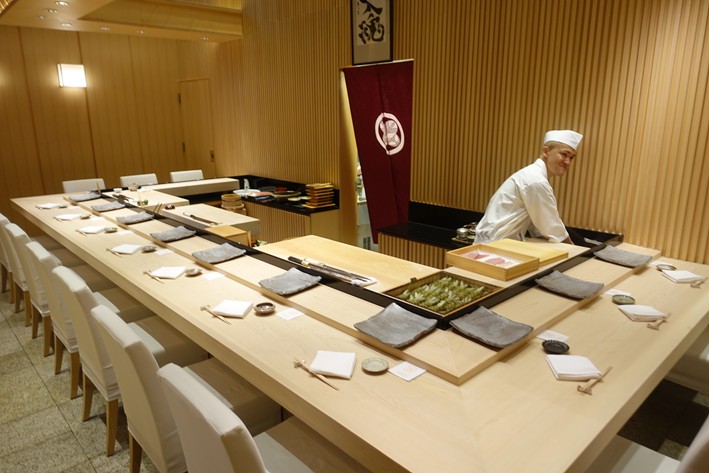

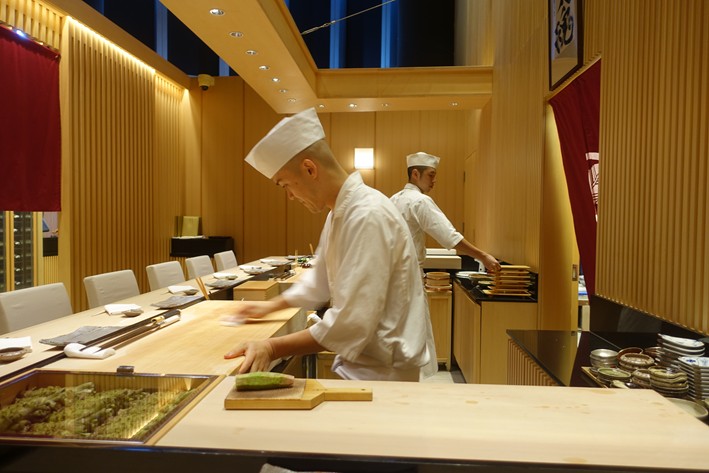




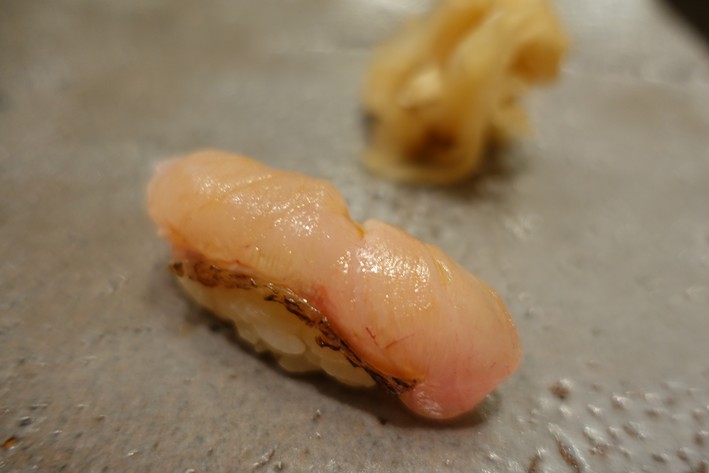

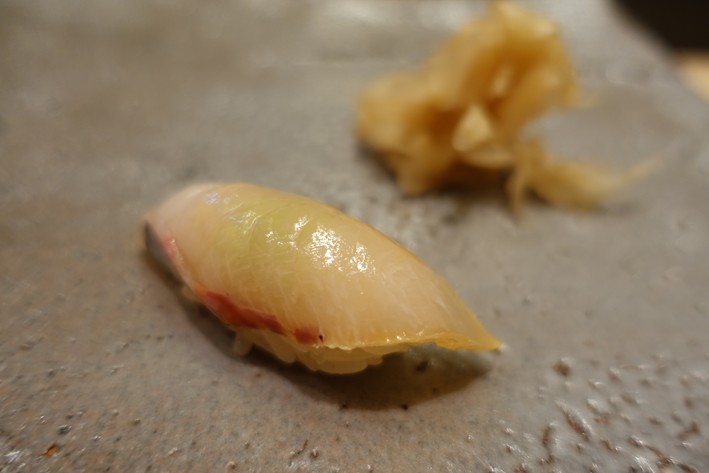
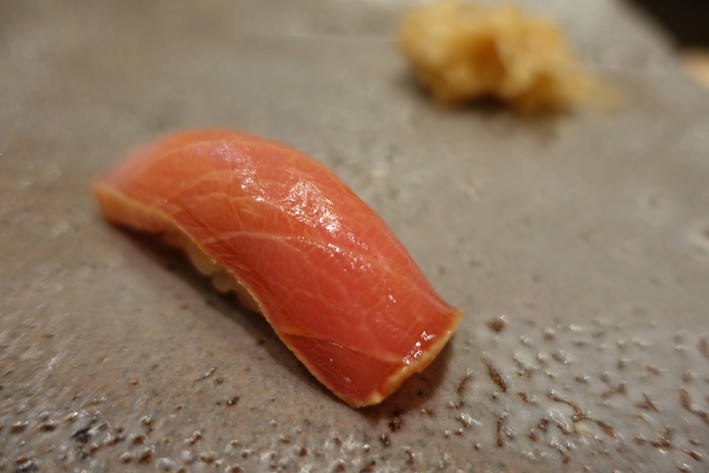


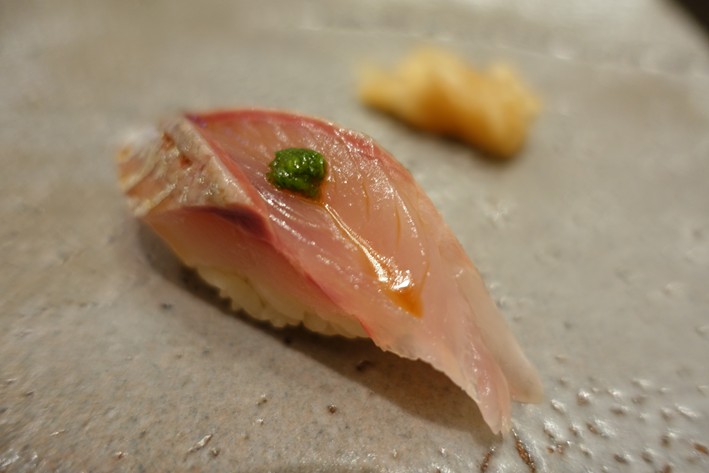

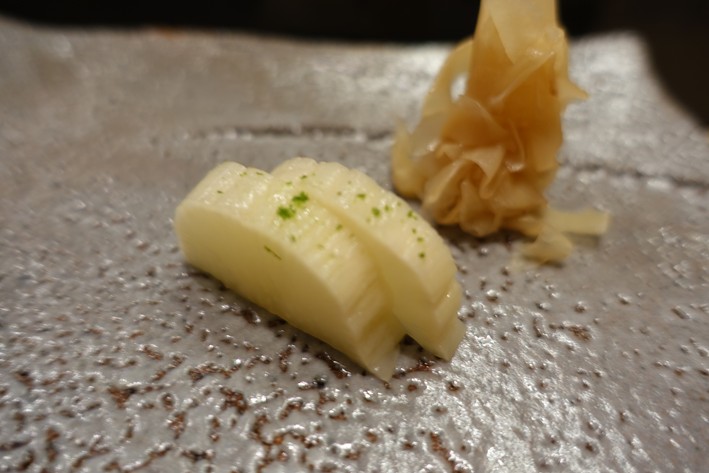


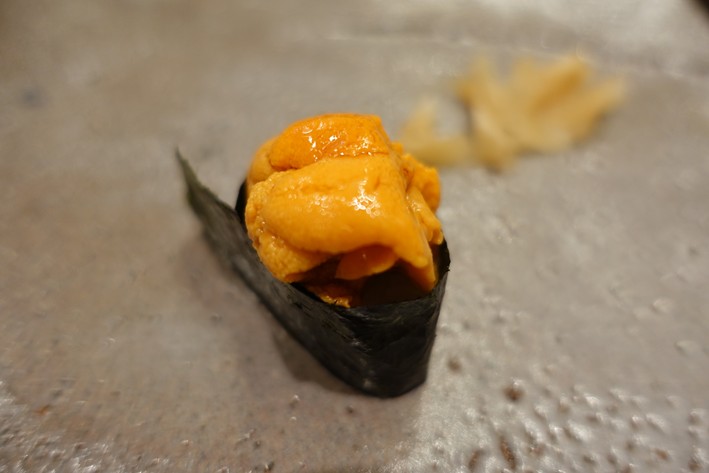
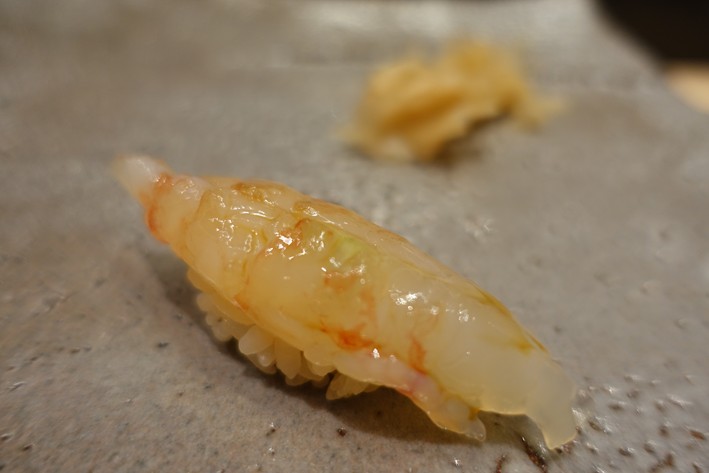
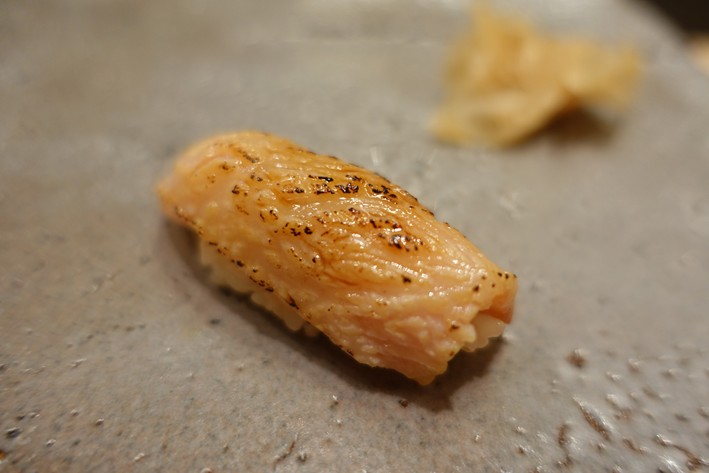
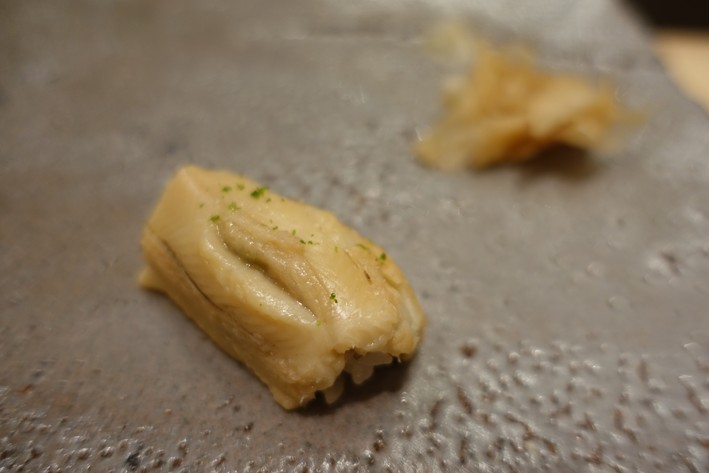
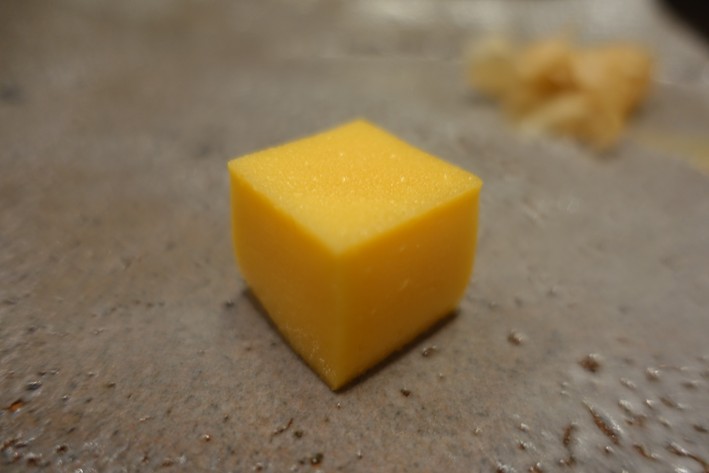
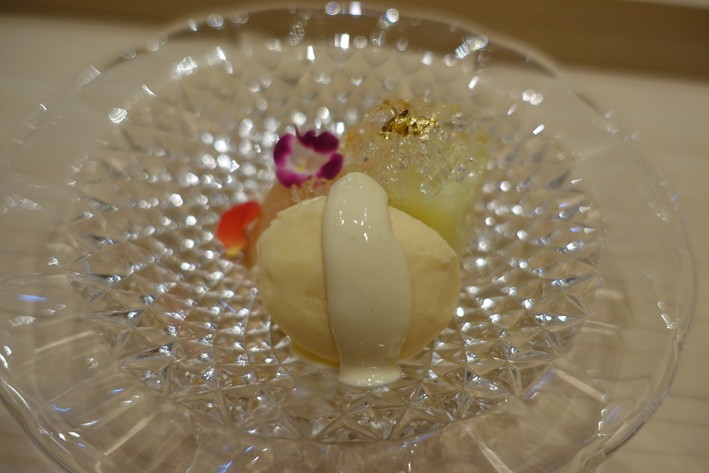
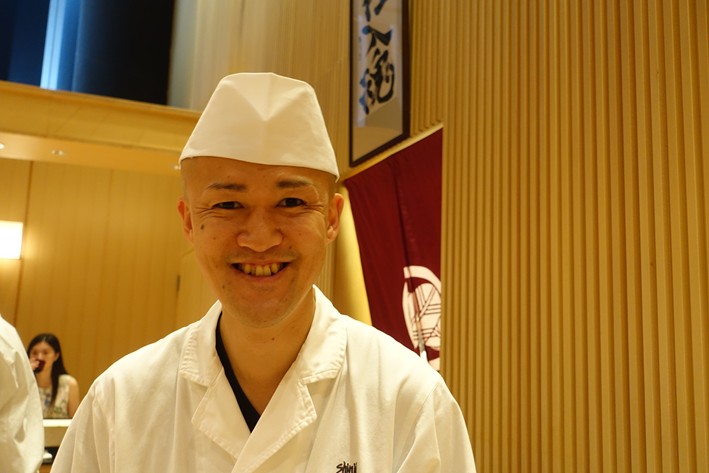

Add a comment
Thank you for submitting your comment, this will be checked and added to the website very soon.
User comments